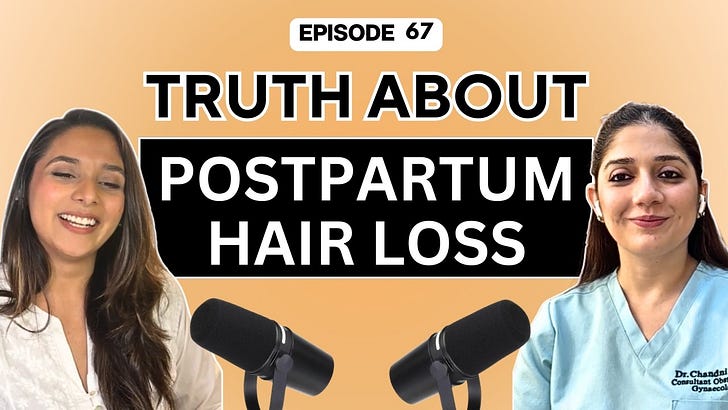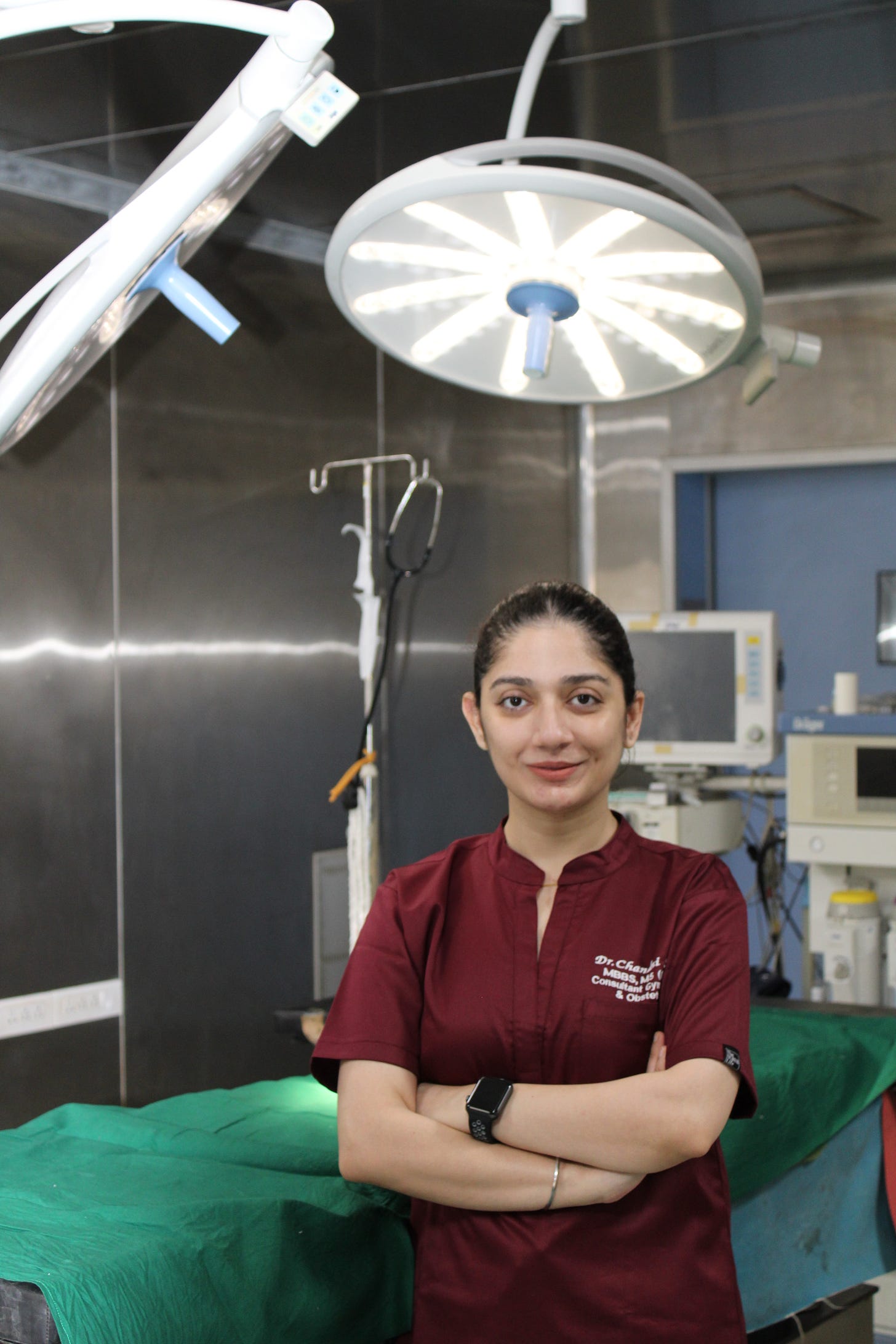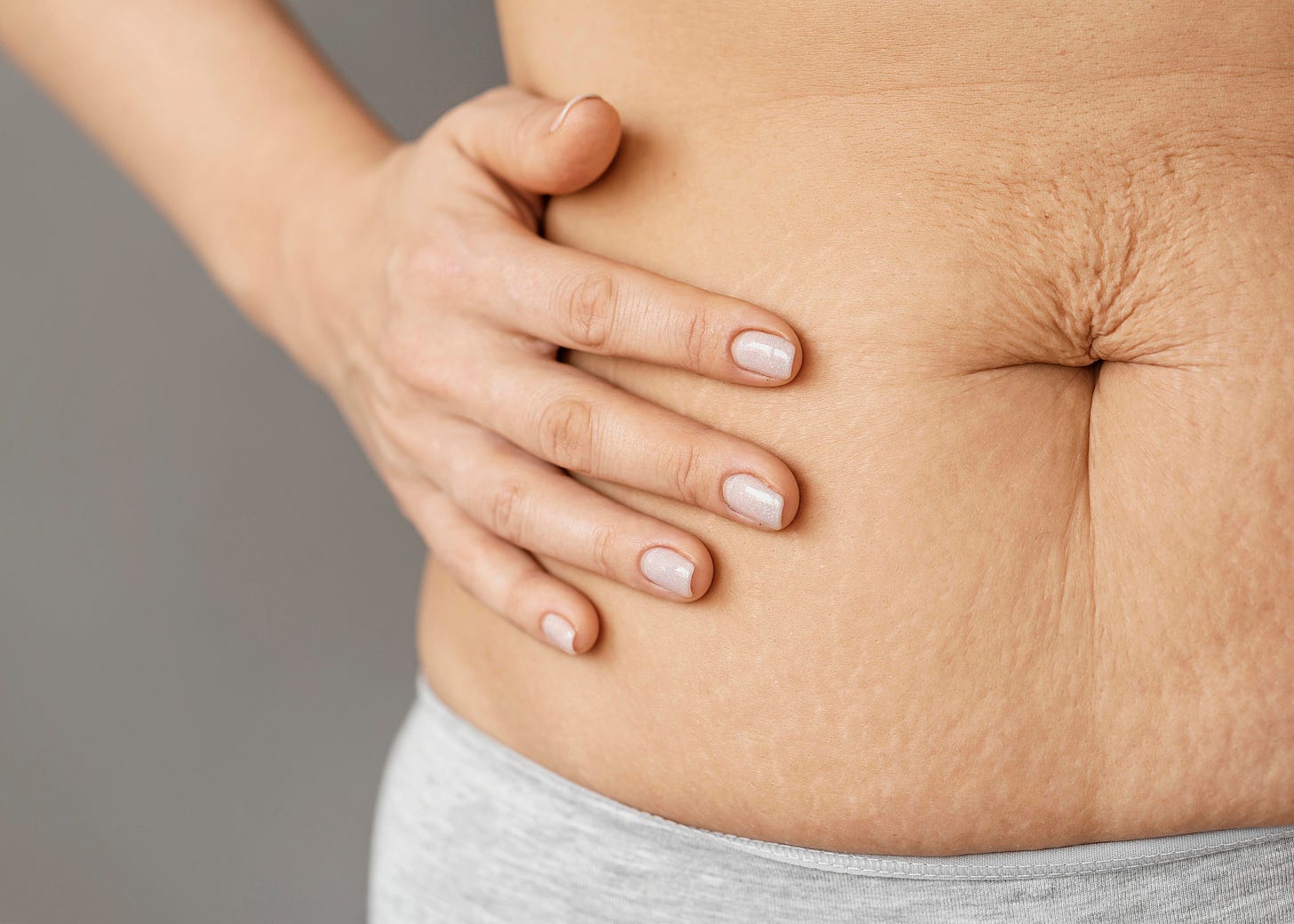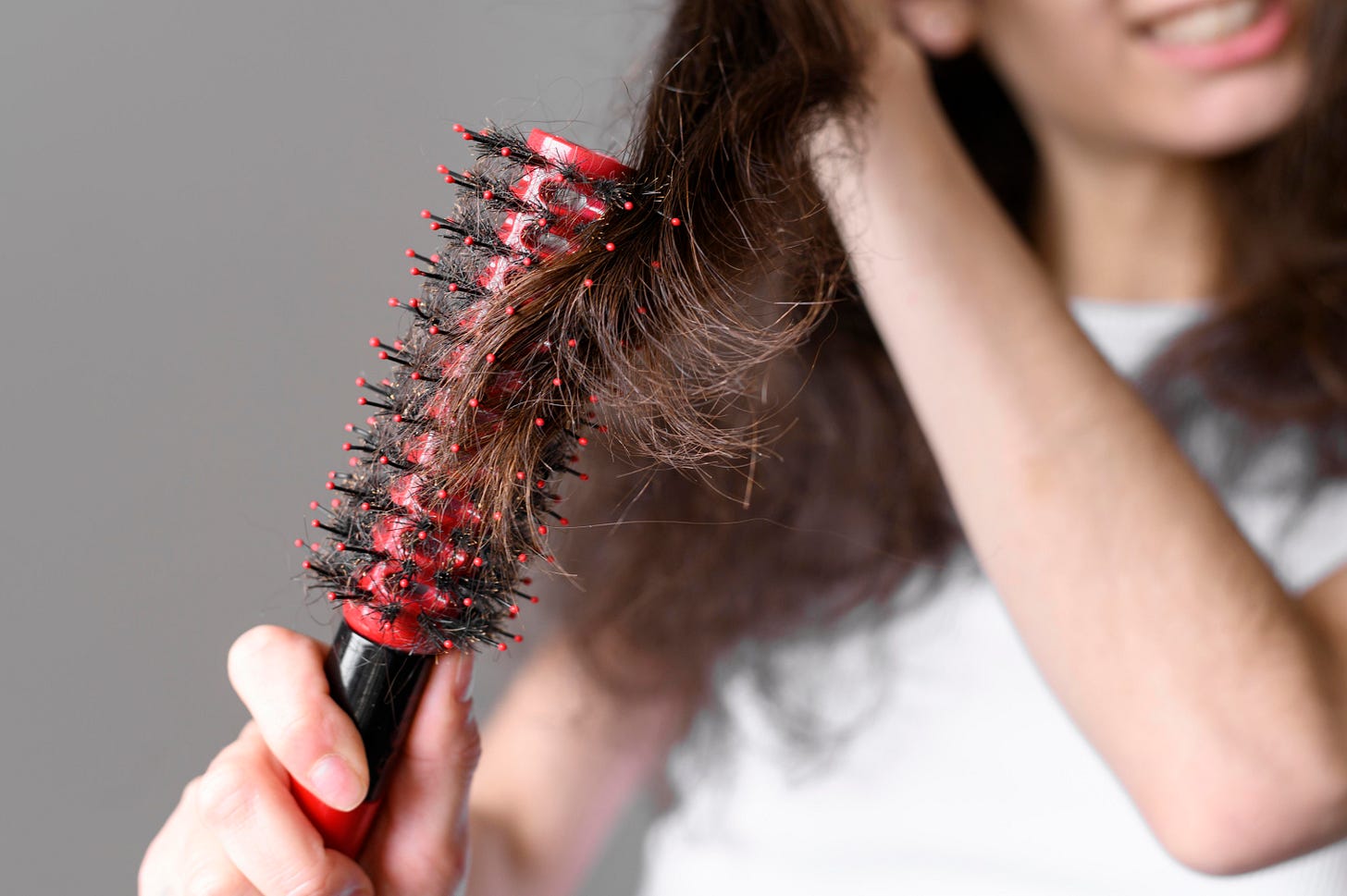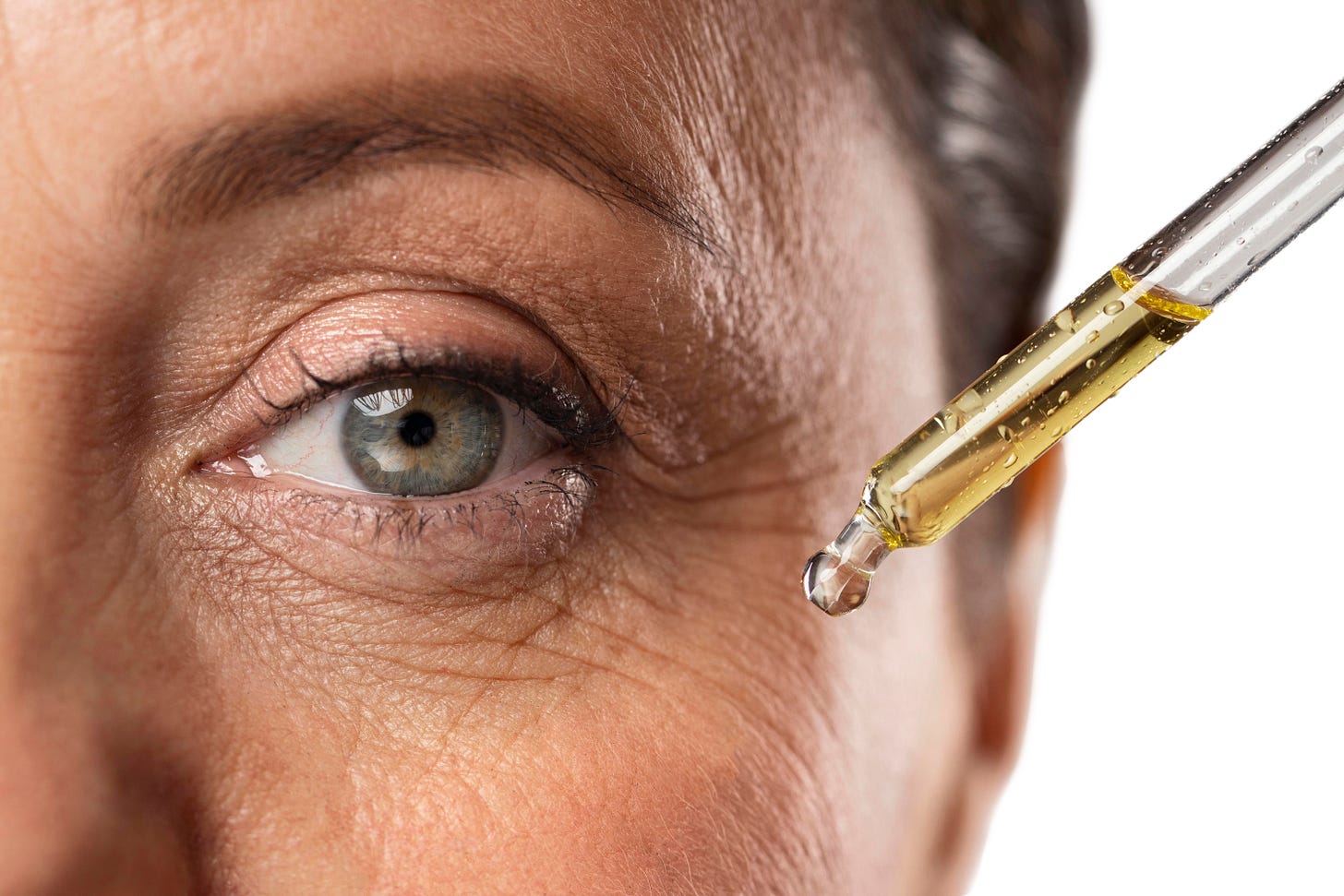[Blog] Ep 67. OBGYN Explains Stretch Marks, Hair Fall and Skin Changes in Pregnancy & What Actually Helps!
ft. Chandni Sehgal
Pregnancy is often described as magical, but let’s be honest—it can feel like your body is going through a roller coaster you never signed up for. From stretch marks and sudden hair fall to dark skin patches that appear out of nowhere, these changes can affect how you feel about yourself.
In this episode of the Modern Indian Parent Podcast, host Rinie Gupta sits down with Dr. Chandni Sehgal, an experienced OBGYN and a new mom herself to talk about the real science behind these changes. Dr. Sehgal not only brings her 16 years of medical practice to the conversation but also her personal experience of navigating pregnancy and postpartum skin and hair challenges.
Introduction to the Mom Bod Series & Episode Theme
This episode is part of the Mom Bod Series on the podcast—a special set of conversations celebrating postpartum bodies. Instead of rushing to “bounce back,” the series emphasizes embracing the transformation while also learning safe and effective ways to care for yourself.
This particular episode dives into stretch marks, postpartum hair fall, and pregnancy-related skin changes like hyperpigmentation. The goal is simple: to help moms understand why these changes happen and what truly helps.
67. OBGYN Explains Stretch Marks, Hair Fall and Skin Changes in Pregnancy & What Actually Helps!
In this episode of the Modern Indian Parent Podcast, Rinie speaks with Dr. Chandni Sehgal (OBGYN & new mom) about the most common skin and hair changes during pregnancy and postpartum — and what really works to care for them.
Meet Dr. Chandni Sehgal (OBGYN & New Mom)
Dr. Sehgal is not just a practicing OBGYN but also a new mother. This unique perspective allows her to blend clinical expertise with lived experience. She reassures moms that these changes are a normal maternal adaptation to pregnancy, not flaws.
What Causes Stretch Marks During Pregnancy?
Stretch marks, often called “tiger stripes,” are one of the most common pregnancy concerns.
According to Dr. Sehgal, they form when:
Skin stretches rapidly as the belly (and other body parts) expand.
Elastin and collagen fibers tear, creating those visible streaks.
Hormonal changes (especially high cortisol levels) reduce the skin’s ability to regenerate elastic fibers.
While genetics play a role: if your mother or sister had them, you’re more likely to as well, lifestyle and skincare choices can influence their severity.
Her biggest reminder: Stretch marks are a natural sign of your body growing life. They’re not something to be ashamed of.
How to Prevent Stretch Marks
Dr. Sehgal emphasizes prevention through hydration, nourishment, and gentle care:
Moisturize, moisturize, moisturize. Use thick creams or oils with cocoa butter, shea butter, almond oil, coconut oil, or vitamin E. Hyaluronic acid is also safe and deeply hydrating.
Start early. Don’t wait for the itchy belly, begin moisturizing in the first trimester.
Massage daily. Gentle circular massages (5–10 minutes) improve blood flow and elasticity.
Avoid scratching. Scratching worsens fiber tears. Instead, soothe with moisturizer.
Eat skin-friendly foods. A diet rich in protein (eggs, lentils, lean meats), vitamin C (citrus fruits, berries, kiwi), and adequate hydration (2–3 liters of water daily) supports collagen production.
Stretch Marks in Other Parts of the Body
Stretch marks don’t appear only on the belly. Rapid weight gain can trigger them on thighs, arms, breasts, and buttocks.
A key factor here is how quickly weight is gained. Ideally, pregnancy weight gain should be gradual (10–12 kg total). Rapid gain, often caused by the “eat for two” myth puts additional stress on the skin, making stretch marks more likely.
Treating Stretch Marks After Birth
Here’s the reality check: No cream or oil can make stretch marks disappear completely.
They may lighten with time and care, but eliminating them requires medical treatments such as:
Laser therapy
Microneedling
Topical retinoids (safe only after pregnancy and breastfeeding)
For moms bothered by their appearance, consulting a dermatologist postpartum is the safest way forward.
Why Do Moms Experience Postpartum Hair Fall?
If you noticed thicker, shinier hair during pregnancy, you’re not imagining it. Elevated estrogen levels keep hair in the growth phase longer.
After childbirth, estrogen drops dramatically, and all those hairs that were “on pause” begin shedding at once. This phenomenon, known as telogen effluvium, is why postpartum hair fall peaks around three months after delivery.
The good news? By your baby’s first birthday, hair growth usually stabilizes.
How to Reduce Postpartum Hair Fall
While you can’t stop hormonal shedding, you can reduce severity and support regrowth:
Check nutrition. Low iron, vitamin D, B12, zinc, and biotin are major culprits. Continue postnatal supplements (iron, calcium, vitamin D, omega-3).
Get tested if needed. Persistent or severe hair fall may be linked to anemia, thyroid imbalance, or vitamin deficiencies.
Be gentle with your hair. Use sulphate-free shampoos, avoid tight hairstyles, and limit heat styling.
Massage your scalp. Gentle daily massages improve circulation and stimulate follicles.
Try safe oils. Rosemary and tea tree oils are great natural options.
Why Women Get Dark Skin Patches During Pregnancy
Hyperpigmentation (dark patches on the face, underarms, or neck) is another common concern.
The cause? Hormones stimulate melanocytes, the skin cells that produce pigment (melanin). Areas already darker (areola, groin, underarms) often deepen in color. Many women also experience melasma (patchy pigmentation on the face).
Dark, velvety patches on the neck may sometimes indicate gestational diabetes so it’s worth discussing with your doctor if you notice them.
Treatment for Hyperpigmentation During Pregnancy
Hyperpigmentation is one of the most common skin changes during pregnancy, and the root cause is hormonal. During these months, levels of estrogen and progesterone rise significantly. These hormones stimulate melanocytes—the skin cells responsible for producing melanin, the pigment that gives skin its color. More active melanocytes mean more melanin, which leads to darker patches of skin.
Safe ways to minimize hyperpigmentation include:
Mineral sunscreens with zinc oxide or titanium dioxide.
Avoiding bleaching agents and harsh chemicals.
Aloe vera for soothing and brightening.
Pregnancy-safe actives: azelaic acid, niacinamide, and vitamin C serums
Gynaecologist-Recommended Products for Stretch Marks, Hair Fall & Skincare
Dr. Sehgal highlights Orimii, a gynecologist-approved Indian brand designed specifically for pregnant and breastfeeding women. Their range includes:
Vitamin C serums
Body butters
Gentle cleansers
Mineral sunscreen without the typical white cast
She personally used and recommended these products, appreciating the peace of mind they offer by being pregnancy-safe.
Why Retinoid-Based Products Should Be Avoided in Pregnancy
Retinoids (including retinol) are strictly unsafe in pregnancy and breastfeeding. They are teratogenic, linked to birth defects when absorbed through the skin or taken orally.
Since many women begin anti-aging routines with retinol in their 30s, it’s crucial to stop using them once pregnant or planning pregnancy.
Unsafe Ingredients to Avoid in Pregnancy Skincare
Dr. Sehgal warns against:
Retinoids (retinol, tretinoin)
Hydroquinone
High-strength salicylic acid
Chemical sunscreens with oxybenzone (potential hormone disruptors)
Instead, look for safe alternatives:
Moisturizers with ceramides, peptides, and hyaluronic acid
Mild peels with lactic or glycolic acid
Pregnancy-safe actives like niacinamide, azelaic acid, and vitamin C
Final Thoughts: Embracing Your Mom Bod
Dr. Sehgal leaves moms with this empowering reminder:
✨ Stretch marks, hair fall, and pigmentation are normal maternal adaptations, not flaws. They are temporary changes, and your body will recover in time.
More importantly, your body has done something extraordinary by creating a whole new human being. Instead of hiding your tiger stripes, carry them as a badge of honor.
Key Takeaways
Stretch marks can’t be completely prevented or erased but can be minimized with hydration, nutrition, and steady weight gain.
Postpartum hair fall is temporary. Focus on nutrition, scalp care, and patience.
Hyperpigmentation is hormonally driven. Use sunscreen, safe actives, and give it time.
Avoid unsafe ingredients like retinoids and hydroquinone during pregnancy and breastfeeding.
Embrace your mom bod becauseit’s a symbol of strength, resilience, and life itself.
67. OBGYN Explains Stretch Marks, Hair Fall and Skin Changes in Pregnancy & What Actually Helps!
In this episode of the Modern Indian Parent Podcast, Rinie speaks with Dr. Chandni Sehgal (OBGYN & new mom) about the most common skin and hair changes during pregnancy and postpartum — and what really works to care for them.


